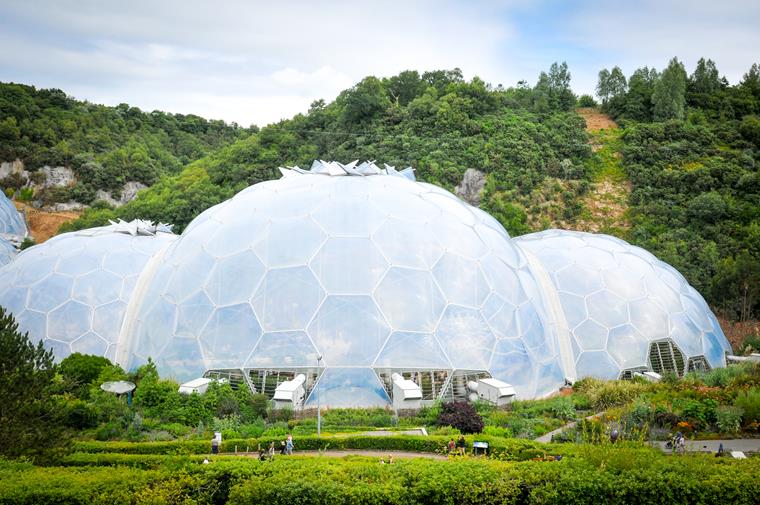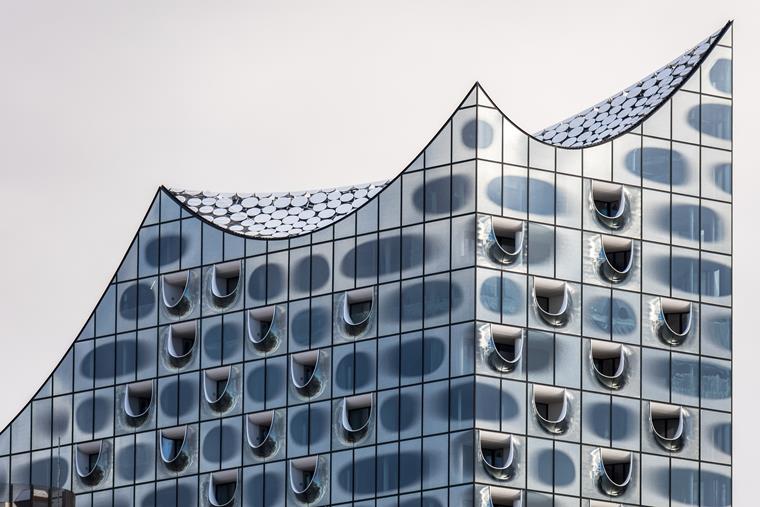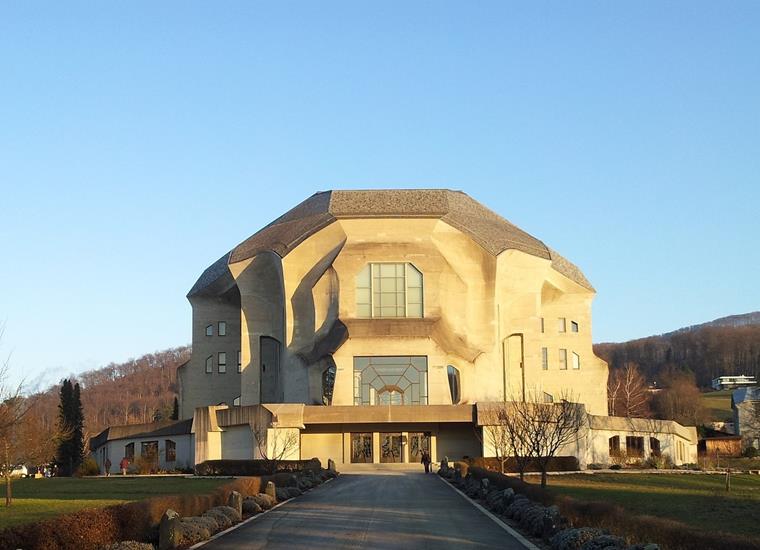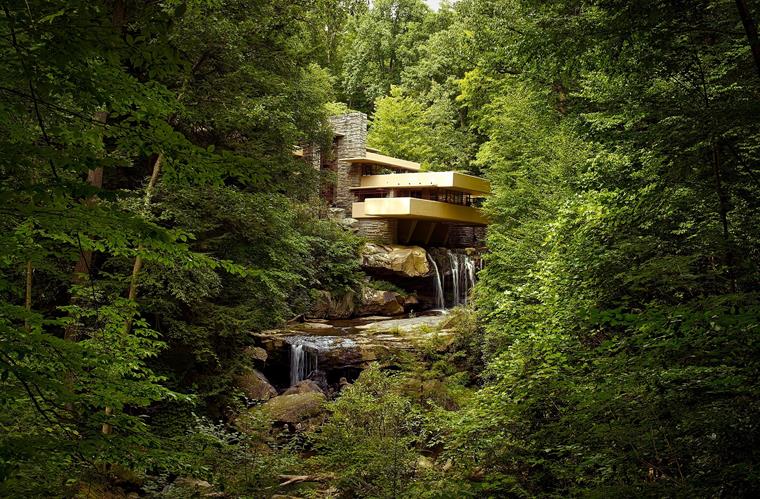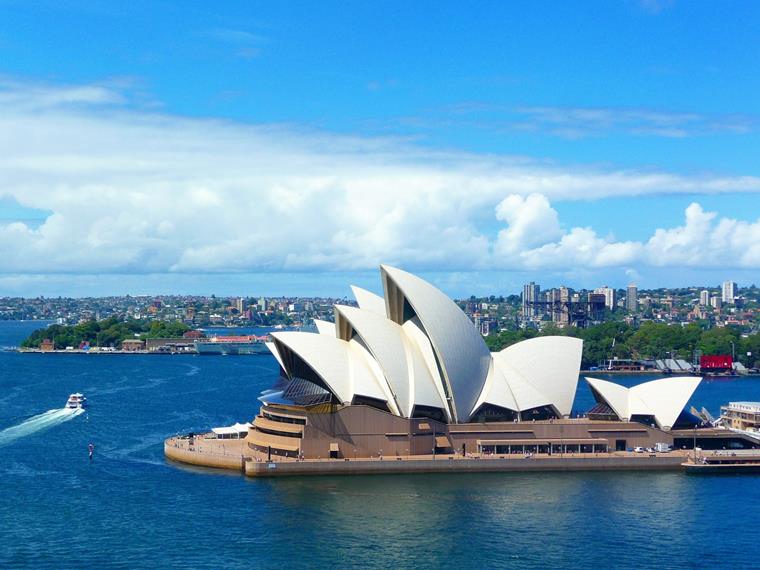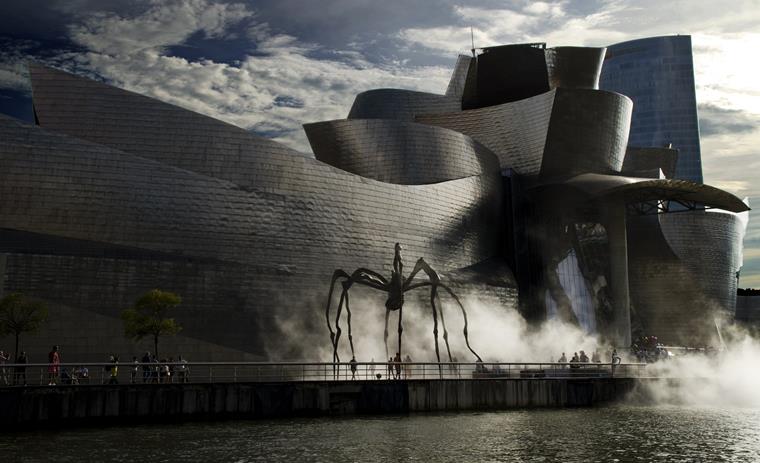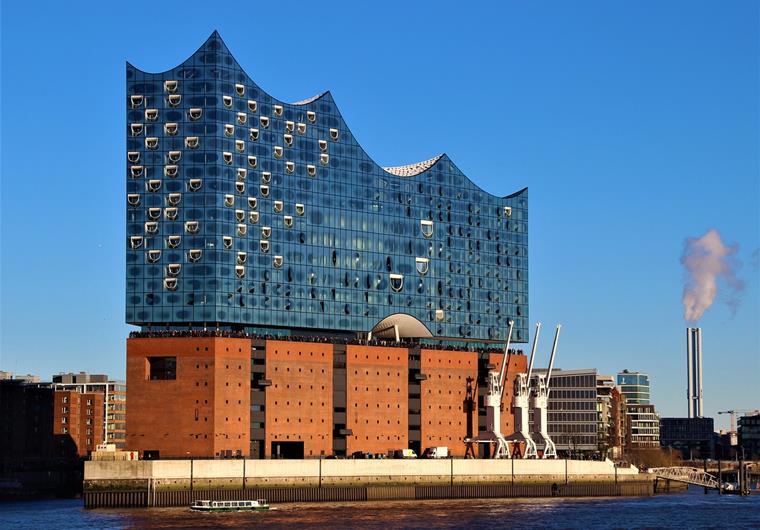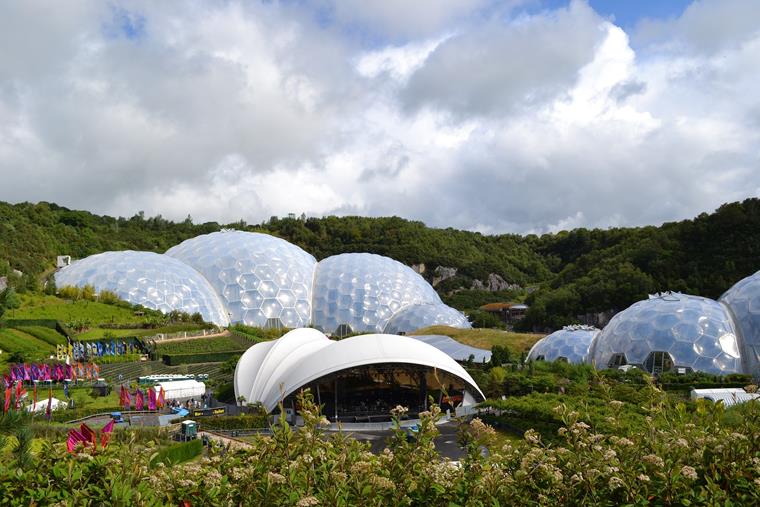This time, we look at a rather unusual architectural style. To be more precise, it is not a strictly defined style, as we know from other movements in construction. Organic architecture is rather a certain approach to architecture.
This approach is interpreted in different ways in organic architecture. Thus, a wide variety of construction projects arises that could not be more individual. This fascinating architectural style thrives on creativity and, above all, on integration into its surroundings.
If a building is located on the edge of a large, curving river, these elegantly curved lines are also reflected in the shape of the structure. An organic building surrounded by tall, jagged outlines of mountains also picks up these shapes in its own outline. Here, the structures themselves are adapted to their environment, not the other way around, as is unfortunately often the case in construction: a really nice approach to architecture.
What is organic architecture? How did this movement originate, and which interesting structures resulted from it? We look at some representatives of this architectural movement and in the end, we summarize what we can learn from organic architecture in the construction industry.
Features of Organic Architecture
When we look at organic structures, one thing strikes us immediately: None of them looks like the other. This incredible variety of implementation options of organic construction is always impressive.
One thing they have in common, which is inspiration by nature. Organic structures, such as leaves, shells, trees, or the human body, are very popular when designing facades and interiors.
Particularly noticeable is the fact that organic buildings are harmonically embedded into their natural environment and the natural terrain profile. However, it is not only their shapes that reflect the surroundings; the materials also reflect their color and texture. Each project is designed absolutely uniquely for its respective location and purpose.
Another important aspect is the environmental awareness of organic architecture. In addition to the focus on the use of environmentally friendly materials and construction processes, the use of recycled materials is often a major issue.
Organic buildings are often operated by renewable energy sources and are ventilated naturally, for example, by using the environment. The roofs of many organic buildings are especially interesting. This is because it is not uncommon to find passive solar panels and green roofs to support energy efficiency, biodiversity, and climate protection.
The organic architecture approach is to create aesthetic pieces of art in and with nature, without harming nature itself or having to take something away from it.
Origin of Organic Architecture
It has its origins in Art Nouveau and in the Arts and Crafts movement. Well-known architects such as Antoni Gaudí and Frank Lloyd Wright were the first to include organic elements in their design plans at the beginning of the 20th century.
Frank Lloyd Wright is still considered a pioneer of organic architecture. Even if the global heyday of organic architecture took place in the 1930s and 1940s, there are still construction projects planned and built today in the style of this architectural idea.
After World War II, people longed for a retreat into nature. By integrating more and more organic elements into modern architecture, a movement of its own gradually developed from the roots of Art Nouveau: organic architecture.
Even today, organic elements can be found in many construction projects. So the idea behind buildings in close contact with nature and the idea of sustainability in construction has lasted to this day.
Examples of Organic Architecture
A building designed and constructed using the organic construction method is often easily recognizable. It is precisely the interaction with the environment that makes organic buildings absolutely unique. Many of them are very well-known worldwide.
Let's take a closer look at some representatives of organic architecture. Let's go on a journey around the world together, starting right in Europe.
Goetheanum
Dornach, Switzerland
Almost like a temple, this building is harmonically embedded in its hilly environment. The curved shapes evoke a feeling of deep serenity, an air of freedom and connection with nature. The Goetheanum can be seen as the first forerunner of organic architecture.
In 1913, Steiner designed the Johannesbau, a building that would have two domes overlapping each other. At the time, this was an absolute novelty and very unusual. As a result, numerous bizarre rumors and myths arose during the construction: about a person buried alive under the foundation, about the rise of a sect, or a Buddhist temple.
As Steiner's teachings of anthroposophy met not only with interest, but mainly with rejection. This revealed one of the biggest problems of human society: whatever I don't know and don't understand is bad. The free principles of his philosophy were not particularly well received by the strengthening NSDAP in the region.
The Johannesbau building in Dornach, Switzerland, opened in 1914. Later, the headquarters of the General Anthroposophical Society were created here, consisting of the community of all those who followed Steiner's teachings. When the entire building burned down on New Year's Eve and into January 1, 1923, suspicions quickly began to circulate in all directions. To this day, the actual arsonist has not been determined.
Steiner himself could not cope with the loss and fell seriously ill. He died two years after the fire. First, in 1929, a new Goetheanum was built in his honor on the foundations of the Johannesbau Foundation, named after Goethe himself, whose views were a great source of inspiration for Steiner.
Fallingwater
Pennsylvania, USA
Now, let's leave Europe and take a look across the sea. It was here that the family of the Pittsburgh men's clothing merchant Kaufmann commissioned the unconventional architect Frank Lloyd Wright to build a residential building with a view of the waterfall. However, that was not enough for Wright himself.
He drew a design within a few hours and did not follow his clients' specifications. Instead of placing the house with a view of the waterfall, he sat it directly on top of it. He suggested that the family live not by the waterfall, but with it. The house above Bear Run, a five-mile-long river in Pennsylvania, thus became a prime example of organic architecture.
Following the natural pattern of the rock formations, he designed cantilevered concrete basins, anchored in a central chimney made of sandstone blocks: a truly bold construction design.
Since the exterior surfaces of the terraced house barely differ in size from the interior surfaces, nature itself can enter the building. The environment, building, and interior design should form a harmonic entity. This shows the holistic approach of organic architecture.
Today, the house belongs to the Western Pennsylvania Conservancy, which wants to operate the living landmark. Contemporary artists and designers can experience this monument of organic architecture and find inspiration for their own projects. So it's not just about preserving the old existing buildings, but also allowing them to repeatedly become a source of new designs and ideas.
Unfortunately, the architect's stubborn will was the reason for numerous problems. Because his structural calculations were simply wrong. If the structure had been built according to his plans, nobody would have been able to prevent an immediate collapse. The developer saved the building, at least temporarily, by using horizontal steel reinforcement.
The building has been in danger of collapsing for decades and has to close for a few months every year so that extensive renovation work can ensure stability for a few more months. However, this does not detract from the awareness of the building. Even before its completion in 1937, “Time” magazine published Frank Lloyd Wright on the cover, with his sketch of Fallingwater.
The Museum of Modern Art staged a biennial traveling exhibition solely for the conception of this building, and since 2011, there has even been a special Lego model of Fallingwater. To this day, it is one of the most-photographed architectural subjects in the world; it became a museum in 1964, and has been a UNESCO World Heritage Site since 2019.
Sydney Opera House
Sydney, Australia
Another very well-known building of organic architecture can be found in Australia. In the 1940s, there was a desire for a representative building in Sydney that should be unique and could become a landmark of the city. It was to be an opera house, located directly at Bennelong Point. There was a suitable piece of wasteland on a peninsula just outside the city.
In 1957, the renowned Danish architect Jørn Utzon prevailed over 233 proposals in the architectural competition. Construction began two years later, but the curved shells of the roof were difficult to calculate. It was often necessary to deviate from the original plans, and the roof alone had to be redesigned twelve times in six years. However, Utzon did not deviate from his idea, because the roofs should represent towering waves as a reference to the nearby sea.
Although the latest technologies of the time were used, even that didn't help much. The computers still worked with punch cards and it took 18 months to calculate the curvatures and complete the structural analysis of the roofs. In the end, 44 draftsmen created 1,700 plans of the roof structure.
The originally planned construction costs quickly skyrocketed from £3.5 million to over £50 million, and the opening date of Australia Day 1963 was postponed until the second half of 1973. Not only the costs, but also artistic differences led to disputes between the government and the architect. After the funds were canceled, Utzon left the construction site, and never set foot on Australian soil again.
Young Australian architects were supposed to take over the construction of the interior as cost-effectively as possible, which meant that many planned special features for the acoustics would be lost. The opera house was inaugurated on October 20, 1973 by Queen Elizabeth II. It is still one of the most impressive and important buildings of the 20th century.
Guggenheim Museum Bilbao
Bilbao, Spain
From Australia, we return to the Northern Hemisphere, to European Spain. This was the manifestation of a city's desire for a way out of insignificance. The city of Bilbao was an important industrial city and port from the 1800s until the 1970s. Shipbuilding, coal, and steel ensured the city's long heyday.
That changed at the end of the 19th century. The industry continued to lag behind technical developments. Closed, obsolete factory halls, shipyards, and ironworks shaped the cityscape. No work, no jobs, and no future, plus the headquarters of a separatist organization that committed multiple terrorist attacks: not exactly a place that people would be happy to live in.
In order to prevent Bilbao from going completely to the dogs, an ambitious cultural project was supposed to change everything. A European location of the American Guggenheim Foundation was to be built here, against all resistance, and as a last hope for a city on the precipice.
However, the aforementioned resistance was intense. Residents of Bilbao could not accept that the city would rather spend millions on a museum instead of modernizing the industrial plants. Local artists were also very skeptical about the American museum.
The driving force here was Canadian architect Frank O. Gehry. Within four years, he managed to transform the riverside region into a completely different piece of land. Gone were the rusty shipyards and dilapidated factories.
In the midst of green spaces and boardwalks, a gigantic scaffolding made of rust-colored steel trusses was built. No straight lines, just curves and shapes that almost seem to dance with each other: architecture in its pure form. Four years later, in 1997, Gehry's building was completed.
Organic shapes, sealed with titanium plates, sometimes show half an artichoke, a decapitated fish without a tail fin, and occasionally the bow of a ship, depending on the point of view: all shapes that suited the city. Here and there, the shiny titanium gives way to glass surfaces or light-colored Spanish sand-lime brick. With a height of 164 ft (50 m), the central atrium hall is the tallest space in the entire building.
The Guggenheim Museum was received with high enthusiasm all over the world. While numerous exhibitions have drawn millions of visitors, Spanish and Basque artists have also been given their own section. Bilbao prospered and became an absolute highlight for art and architecture.
The Guggenheim Museum in Bilbao is a prime example of how architecture and art can work together to breathe new life into a dying city. The term Bilbao effect has survived to this day.
Elbphilharmonie
Hamburg, Germany
We finish our architectural journey in Germany, in the Hanseatic city of Hamburg, to be more specific. In 2017, one of the most beautiful buildings in organic architecture was completed here.
The idea for a concert hall with very special acoustics dates back to the early 2000s. The plan was to merge modern architecture with the existing structure of Kaispeicher A warehouse, an old brick building in HafenCity.
The design was revised several times, culminating in an undulating glass facade and the unique "white skin" roof. Inside the ceiling of the "Great Concert Hall", there is cladding made of 10,000 microshaped drywall plates with a total area of 64,583 ft² (6,000 m²) that was installed to disperse sound waves, and thus ensure perfect acoustics.
The Elbphilharmonie is also impressive from the outside. The dynamic and organic appearance is intended to be reminiscent of the waves of the Elbe River, emphasizing the maritime character as well as the close ties of the Hanseatic city with the waterway. Each glass plate is individually shaped and plays its part in the unique facade design. The harmonic transition between a historic brick warehouse and a modern concert hall was successful.
Technical feasibility was a major challenge for structural design; however, the project could finally be completed as planned, but with a tenfold increase in costs and a significantly longer construction time.
Another special feature is the implementation of the idea of sustainability. There is a beekeeping facility on the roof of the Elbphilharmonie to preserve the species. Furthermore, the striving for sustainability and energy efficiency resulted in a "Gold" certificate from the German Sustainable Building Council (DGNB).
Conclusion: Organic Architecture
In summary, we can say that organic architecture is an architectural approach that considers a building holistically. In particular, the interaction between buildings and their environment is a central idea of this architectural idea.
Sustainability is also a central issue in organic building. Recycled materials, renewable energy sources, and green building approaches have played a major role from the beginning to the present. With its curving and flowing forms, organic architecture overcomes the rigid, geometric structures of traditional construction.
Each building is absolutely unique and tailored to its location and individual purpose. It has a long-lasting impact on the way we see buildings and their relation to nature.
What can we learn from organic architecture?
We can learn a lot from this approach. Organic architecture emphasizes the integration of the buildings into their natural environment without distorting or even destroying it. Many of these structures merge with the terrain.
Of course, the idea of integrating renewable energy sources and finding energy-efficient solutions is also an important issue of organic architecture. Buildings should give something back to people and their surroundings, offer added value, and not harm them.
Apart from environmental and nature awareness, advancement of innovative construction methods and creative solutions to current challenges in the construction industry are also crucial to the success of this architectural idea.
We can be inspired by this approach to research new materials and integrate them in our projects. Because we already know: we will not get very far with our favorite building material, reinforced concrete, if we want to pay attention to our environment at the same time.
Also, when it comes to the structure itself, a little more creativity would be good for our construction industry. Organic buildings are absolutely unique and attract a lot of attention. If we invest a little more in the creative design of our buildings, we may be able to help some of our gray concrete cities to have their very own Bilbao effect. It's definitely worth a try.
